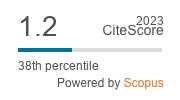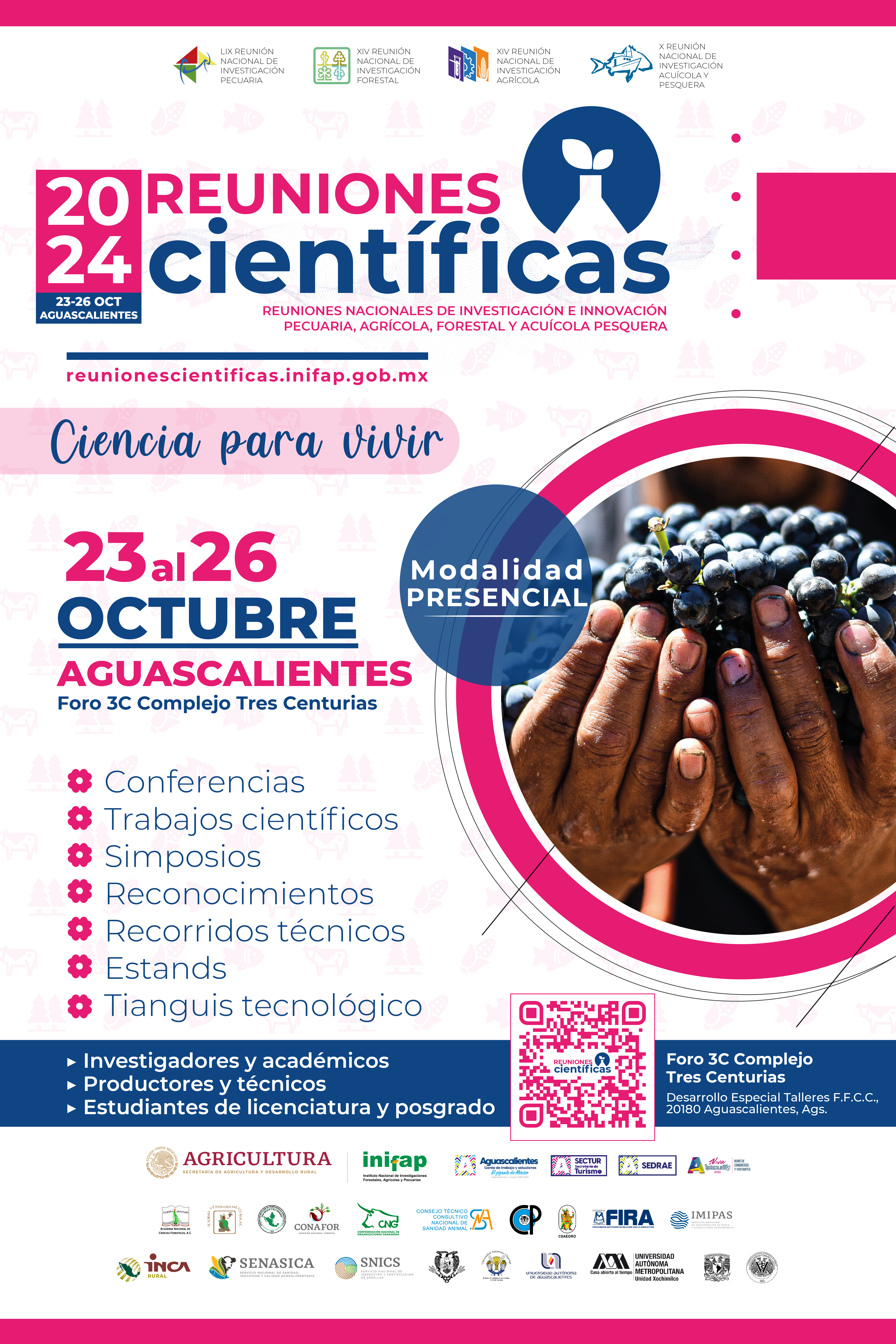Efecto de monensina intraruminal sobre el β-hidroxibutirato, enfermedades del periparto, producción de leche y sus componentes en ganado Holstein
DOI:
https://doi.org/10.22319/rmcp.v10i1.4661Palabras clave:
Monensina, Bolo intraruminal, Enfermedades, Postparto, Vaca lechera.Resumen
El objetivo fue determinar los efectos de la administración de un bolo intraruminal de liberación lenta de monensina en vacas lecheras sobre indicadores de salud y producción. El estudio se realizó en una lechería de la Región Metropolitana de Chile. Se seleccionaron 77 vacas multíparas, que a los 21 días antes de la fecha esperada de parto se asignaron al azar a un grupo tratado (n= 37) o testigo (n= 40). El grupo tratado recibió un bolo de monensina que libera 335 mg/día por aproximadamente 95 días. Se estudiaron la presencia de fiebre (t°≥39.5 °C), incidencia de enfermedades del postparto, concentraciones de β-hidroxibutirato (BHB) en sangre, y la condición corporal desde los 21 días preparto hasta los 21 días post-parto. También se comparó la producción y composición de leche y la cuenta de células somáticas (CCS) durante el posparto. Las concentraciones de BHB en sangre fueron similares entre ambos grupos (P>0.05). Tampoco se detectaron diferencias en la incidencia de cetosis, temperatura corporal (fiebre), metritis puerperal, retención de membranas fetales; excepto endometritis, donde se observó una tendencia a presentarse una menor incidencia en el grupo tratado vs testigo. La monensina no mejoró significativamente la producción de leche, ni el contenido de grasa o la CCS, salvo un mayor nivel de porcentaje de proteína durante la primera semana postparto en favor del grupo tratado. Las vacas tratadas tuvieron una menor pérdida de condición corporal (P<0.05) entre el parto y los 21 días post parto, que vacas testigo.
Descargas
Citas
Drackley JK, Overton TR, Douglas GN. Adaptations of glucose and long-chain fatty acid metabolism in liver of dairy cows during the periparturient period. J Dairy Sci 2001;84(E. Suppl):E100-E112.
Melendez P, Risco CA. Management of transition cows to optimize reproductive efficiency in dairy herds. Vet Clin North Am Food Anim Prac 2005;21:485-501.
Grummer RR. Impact of changes in organic nutrient metabolism on feeding the transition dairy cows. J Anim Sci 1995;73:2820-2833.
Leblanc S. Monitoring metabolic health of dairy cattle in the transition period. J Reprod Dev 2010;56 (Suppl):S29–S35.
Herdt TH. Ruminant adaptation to negative energy balance. Influences on the etiology of ketosis and fatty liver. Vet Clin North Am Food Anim Prac 2000;16:215-230.
McArt JAA, Nydam DV, Overton MW. Hyperketonemia in early lactation dairy cattle: A deterministic estimate of component and total cost per case. J Dairy Sci 2015;98:2043–2054.
Duffield TF, Lissemore KD, McBride BW, Leslie KE. Impact of hyperketonemia in early lactation dairy cows on health and production. J Dairy Sci 2009;92:571–580.
Oetzel G R. Monitoring and testing dairy herds for metabolic disease. Vet Clin North Am Food Anim Pract 2004;20:651–674.
Tatone EH, Gordon JL, Hubbs J, LeBlanc SJ, DeVries TJ, Duffield TF. A systematic review and meta-analysis of the diagnostic accuracy of point-of-care tests for the detection of hyperketonemia in dairy cows. Prev Vet Med 2016;130:18–32.
Suthar VS, Canelas-Raposo J, Deniz A, Heuwieser W. Prevalence of subclinical ketosis and relationships with postpartum diseases in European dairy cows. J Dairy Sci 2013;96:2925-2938.
Rutherford AJ, Oikonomou G, Smith RF. The effect of subclinical ketosis on activity at estrus and reproductive performance in dairy cattle. J Dairy Sci 2016;99:4808-4815.
Liang D, Arnold LM, Stowe CJ, Harmon RJ, Bewley JM. Estimating US dairy clinical disease costs with a stochastic simulation model. J Dairy Sci 2017;100:1472-1486.
Melendez P, Goff JP, Risco CA, Archbald LF, Littell R, Donovan GA. Incidence of subclinical ketosis in cows supplemented with a monensin controlled-release capsule in Holstein cattle Florida, USA. Prev Vet Med 2005;73:33–42.
Duffield T, Rabiee A, Lean I. A meta-analysis of the impact of monensin in lactating dairy cattle. Part 1. Metabolic effects. J Dairy Sci 2008;91:1334-1346.
Drackley JK, Cardoso FC. Prepartum and postpartum nutritional management to optimize fertility in high-yielding dairy cows in confined TMR systems. Animal 2014;8,s1:5-14.
Chilean Meteorological Service. 2017. http://www.meteochile.gob.cl/PortalDMC-web/index.xhtml. Accessed Jan 31, 2017.
Van Amburgh ME, Collao-Saenz EA, Higgs RJ, Ross DA, Recktenwald EB, Raffrenato E, et al. The Cornell Net Carbohydrate and Protein System: Updates to the model and evaluation of version 6.5. J Dairy Sci 2015;98:6361-6380.
Ferguson JM, Galligan DT, Thomsen N. Principal descriptors of body condition score in Holstein cows. J Dairy Sci 1994;77:2695-2703.
Kelton D, Lissemore K, Martin R. Recommendations for recording and calculating the incidence of selected clinical diseases of dairy cattle. J Dairy Sci 1998;81:2502–2509.
Sheldon IM, Lewis GS, Leblanc S, Gilbert RO. Defining postpartum uterine disease in cattle. Theriogenology 2006;65:1516-1530.
SAS INSTITUTE. 2013. SAS/STAT Software: Change and enhancements through release 9.4 for Windows. SAS Institute Inc., Cary, NC.
Blis C. The transformation of percentages for use in the analysis of variance. Ohio J Sci 1938;38:9-12.
Dabdoub S, Shook G. Phenotypic relations among milk yield, somatic cell count and clinical mastitis. J Dairy Sci 1984;67:163-164.
Littell RC, Henry PR, Ammerman CB. Statistical analysis of repeated measures data using SAS procedures. J Anim Sci 1998;76:1216-1231.
Wagner JR, Green HB, Symanowski JT, Wilkinson JID, Davis JS, Himstedt MR, et al. 1999. Effect of monensin on feed intake, body weight, and body condition in dairy cows. J Dairy Sci 1999;82(Suppl 1):75.
Drong C, Meyer U, von Soosten D, Frahm J, Rehage J, Breves G, Danicke S. Effect of monensin and essential oils on performance and energy metabolism of transition dairy cows. J Anim Physiol Anim Nutr 2016;100:537-551.
Richardson LF, Raun AP, Potter EL, Cooley CO, Rathmacher RP. Effect of monensin on rumen fermentation in vitro and in vivo. J Anim Sci 1976;43:657-664.
Nagaraja TG, Newbold CJ, Van Nevel CJ, Demeyer DI. 1997. Manipulation of ruminal fermentation. In: Hobson PN, Stewart CS editors. The rumen microbial ecosystem. Second edition. Blackie Academic & Professional, England; 1997:523-632.
Callaway TR, Martin SA. Effects of cellobiose and monensin on in vitro fermentation of organic acids by mixed ruminal bacteria. J Dairy Sci 1997;80:1126-1135.
Green BL, McBride BW, Sandals D, Leslie KE, Bagg R, Dick P. The impact of a monensin controlled-released capsule on subclinical ketosis in the transition dairy cows. J Dairy Sci 1999;82:333-342.
Duffield TF, Sandals D, Leslie KE, Lissemore K, McBride BW, Lumsden JH, Dick P, Bagg R. Efficacy of monensin for the prevention of subclinical ketosis in lactating dairy cows. J Dairy Sci 1998;81:2866-2873.
Compton CW, Young L, McDougall S. Efficacy of controlled-release capsules containing monensin for the prevention of subclinical ketosis in pasture-fed dairy cows. NZ Vet J 2015;63:249-253.
Grummer RR, Winkler JC, Bertics SJ, Studer VA. Effect of propylene glycol dosage during feed restriction on metabolites in blood of prepartum Holstein heifers. J Dairy Sci 1994;77:3618-3623.
Christensen JO, Grummer RR, Rasmussen FE. Bertics SJ. Effect of method of delivery of propylene glycol on plasma metabolites of feed-restricted cattle. J Dairy Sci 1997;80:563-568.
Kristensen NB, Raun BML. Ruminal and intermediary metabolism of propylene glycol in lactating Holstein cows. J Dairy Sci 2007;90:4707-4717.
Melendez P, Goff JP, Risco CA, Archbald LF, Littell R, Donovan GA. Pre-partum monensin supplementation improves body reserves at calving and milk yield in Holstein cows dried-off with low body condition score. Res Vet Sci 2007;82:349-357.
Zahra LC, Duffrield TF, Leslie KE, Overton TR, Putnam D, Leblanc SJ. Effects of rumen-protected choline and monensin on milk production and metabolism of periparturient dairy cows. J Dairy Sci 2006;89:4808-4818.
Fisher LJ, Erfle JD, Lodge GA, Sauer FD. Effects of propylene glycol or glycerol supplementation of the diet of dairy cows on feed intake, milk yield and composition, and incidence of ketosis. Canadian J Anim Sci 1973;53:289–296.
Formigoni A, Cornil MC, Prandi A, Mordenti A, Rossi A, Portetelle D, Renaville R. Effect of propylene glycol supplementation around parturition on milk yield, reproduction performance and some hormonal and metabolic characteristics in dairy cows. J Dairy Res 1996;63:11-24.
Juchem SO, Santos FA, Imaizumi H, Pires AV, Barnabe EC. Production and blood parameters of Holstein cows treated prepartum with sodium monensin or propylene glicol. J Dairy Sci 2004;87:680-689.
De Koster JD, Opsomer G. Insulin resistance in dairy cows. Vet Clin North Am Food Anim Prac 2013;29:299-322.
Descargas
Publicado
Cómo citar
-
Resumen1341
-
PDF312
-
PDF 223
-
Texto Completo372
Número
Sección
Licencia
Los autores/as que publiquen en la Revista Mexicana de Ciencias Pecuarias aceptan las siguientes condiciones:
De acuerdo con la legislación de derechos de autor, la Revista Mexicana de Ciencias Pecuarias reconoce y respeta el derecho moral de los autores/as, así como la titularidad del derecho patrimonial, el cual será cedido a la revista para su difusión en acceso abierto.

Esta obra está bajo una Licencia Creative Commons Atribución-NoComercial-CompartirIgual 4.0 Internacional.






